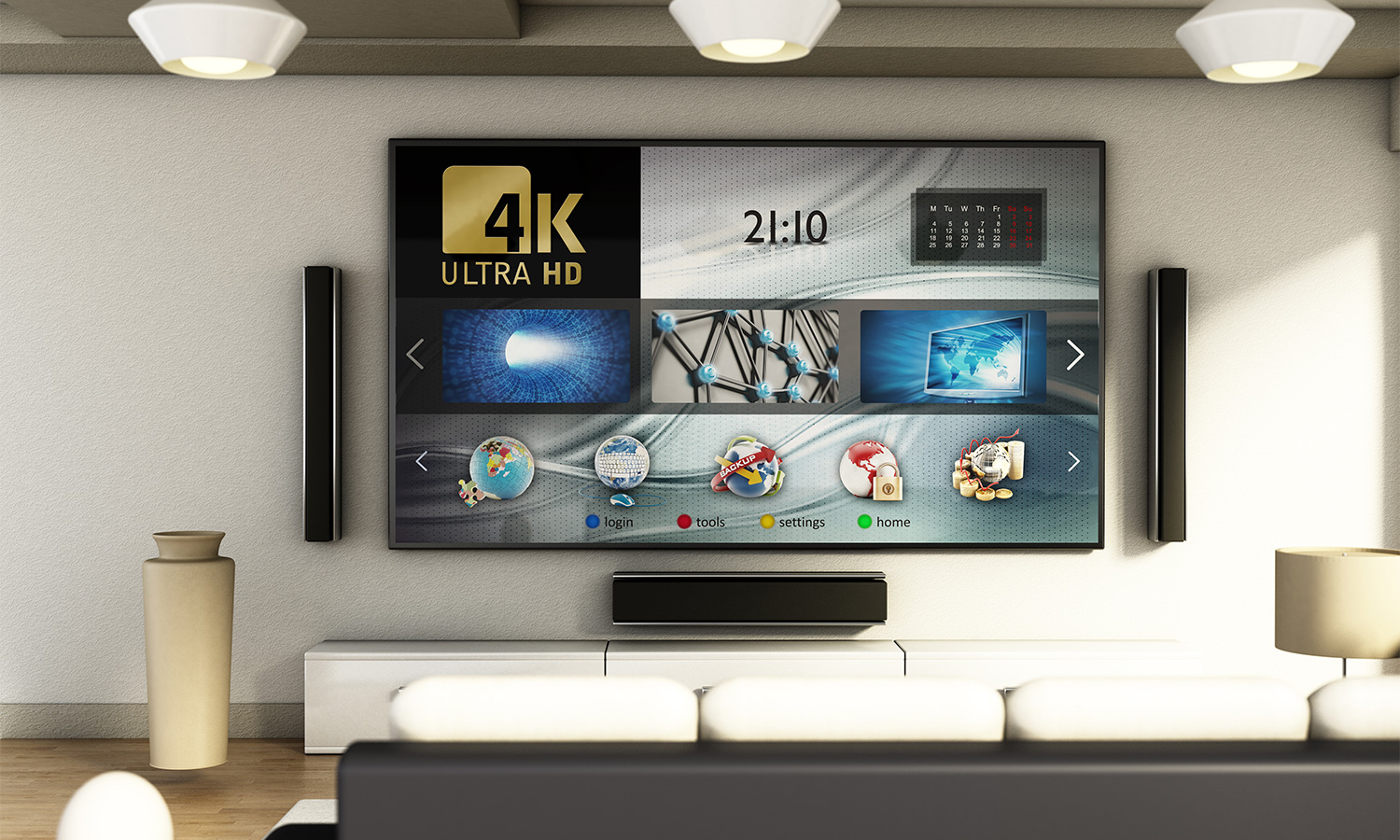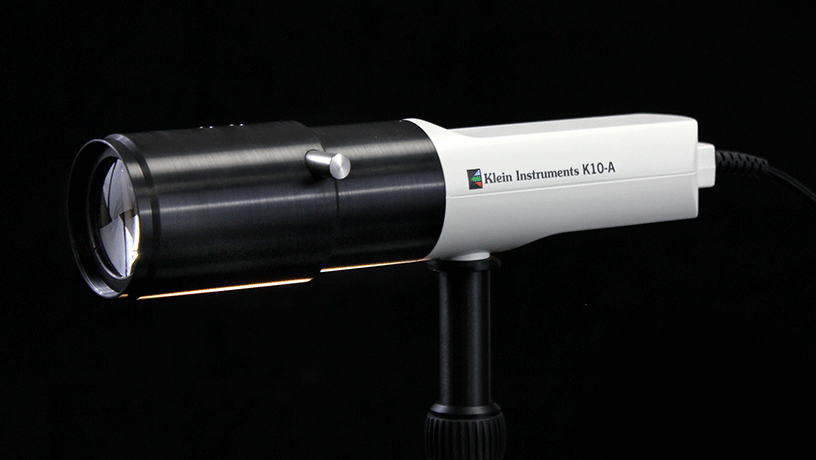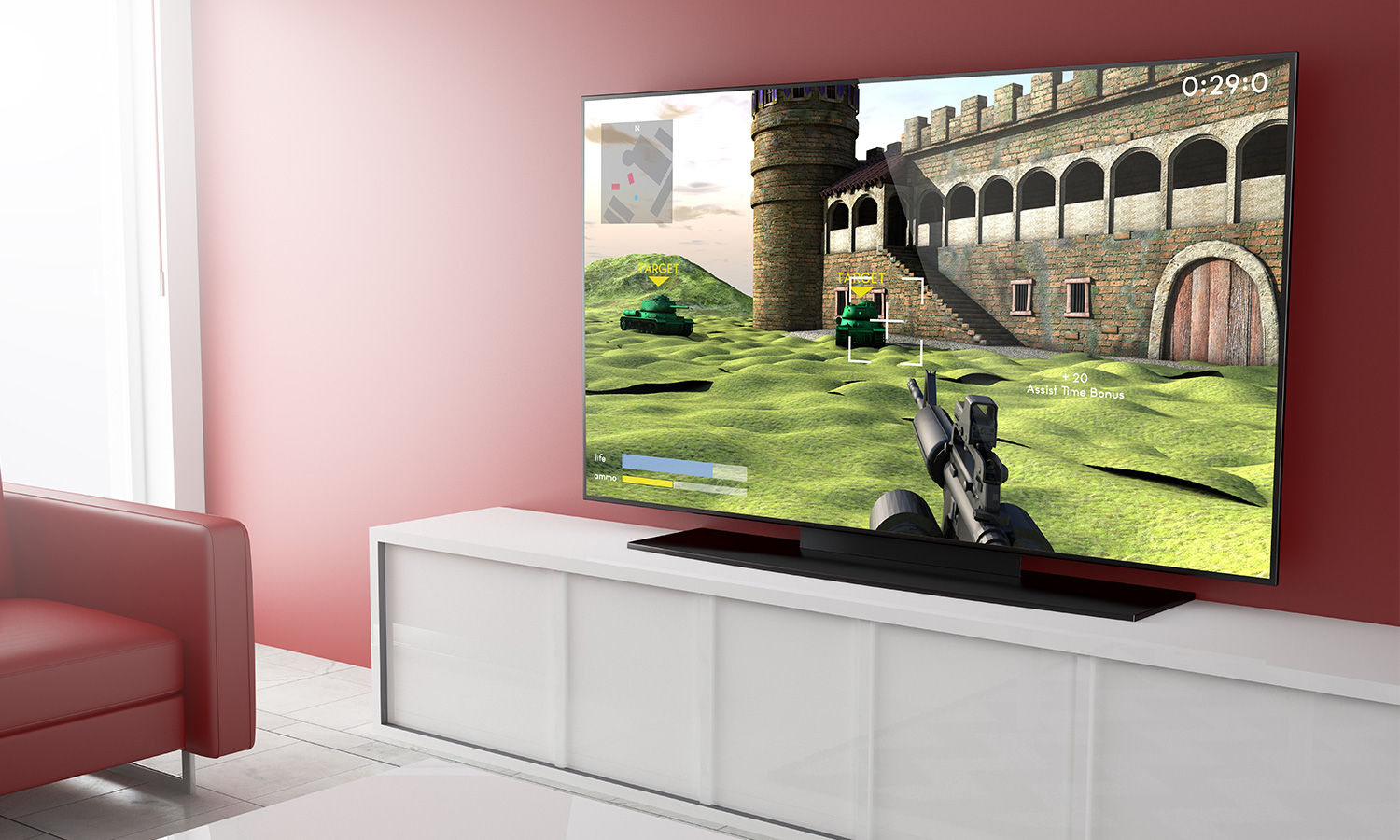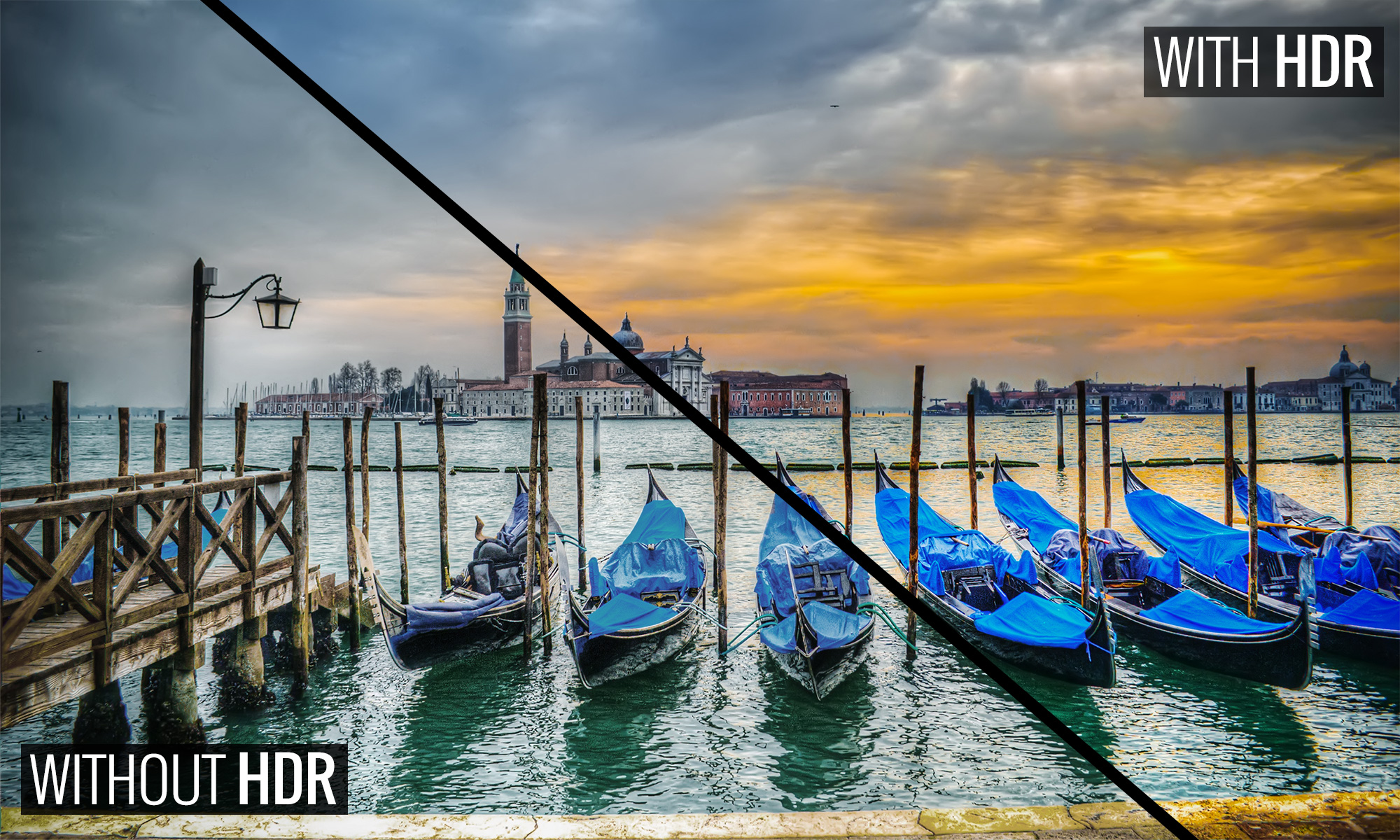How to Get the Best Picture Quality from Your 4K TV
We explain what each picture setting does (Movies, Sports, Vivid, etc.) and why some of these picture settings cause more problems than they solve.
Watching a state-of-the-art TV with the wrong settings enabled is like driving a Ferrari with bald tires: You're not getting the full potential out of your purchase.

More: Cheap TV deals
With the latest 4K ultra-HD TVs, there are often a bewildering welter of options and preset modes that can make it tricky to find just the right settings. Fortunately, it doesn’t take much to get the best performance from your TV. Here’s how to do it.
Do I need to hire a professional?
To get the absolute best image, your TV should be tuned or calibrated for a specific room. But calibration, in its strictest definition, requires professional testing equipment (such as a Klein K-10A colorimeter or an X-Rite i1 Basic Pro 2 spectrophotometer), proper training and, usually, access to special setup codes used by installers. It also entails setting up at least two custom viewing modes to accommodate specific lighting situations — for example, one that works for night viewing and another for the daytime.

Fortunately, you don't need to buy thousands of dollars’ worth of test equipment or spend hundreds hiring a professional calibrator. Today, most TVs arrive with at least one preset picture mode that delivers remarkably accurate colors and contrast and will suffice for the average viewing situation.
"The high-end brands over the last five years come very well calibrated," said Ray Soneira, founder and CEO of DisplayMate Technologies, an independent testing and consulting firm. Soneira has been at the forefront of TV testing for decades and is the author of one of the first monitor-testing programs, DisplayMate. For most home viewing situations, professional calibration isn’t necessary, he said.
Rather, all you need is a little knowledge — and our sage advice — to get the best TV picture for the big game or a big movie night.
Sign up to get the BEST of Tom's Guide direct to your inbox.
Get instant access to breaking news, the hottest reviews, great deals and helpful tips.
What do the preset picture modes mean, and which is best?
| MODE | BEST FOR | WORST FOR |
| Movie/Cinema | Most situations | Bright rooms |
| Sports | Bars and man caves | Everything else |
| Game | Video games | Everything else |
| Vivid/Dynamic | Best Buy showrooms | Everything else |
Generally, there are at least four different preset video modes or settings on most 4K TVs: Movie, Sports, Game and Vivid. Confusingly, the terminology for these modes varies among manufacturers; for example, Vivid mode is sometimes called Dynamic mode or Standard mode.
"Movie mode is the most accurate mode out of the box," said Soner Oklu, a quality assurance engineer at Samsung. That means the TV is set in the factory to reproduce the official picture specifications (for example,, Rec. 709 and a 2.2 gamma for HD) as closely as possible to the picture that the director or filmmaker originally intended.
Many manufacturers offer a variety of other stored presets in the Picture or Video menus of their TVs.
Other manufacturers may refer to the same mode as Cinema mode (LG and Sony) or Calibrated or Calibrated Dark mode (Vizio). As the nomenclature suggests, it's the ideal mode for watching movies, with one caveat: Movie modes tend to reduce overall brightness to improve contrast, but in a brightly lit room, the subdued hues may look washed-out to some viewers.
Picture preferences are still subjective, however, and "not everybody wants a strictly accurate picture," Soneira noted. Consequently, many manufacturers offer a variety of other stored presets in the Picture or Video menus of their TVs. Samsung, for example, also offers a Standard mode and a Natural mode; the former senses the ambient light in the room to automatically adjust brightness and contrast; in Natural mode, the sensor is turned off.
MORE: Samsung TV Settings Guide: What to Enable, Disable and Tweak
Avoid Vivid mode
The preset mode to avoid is Vivid mode or Dynamic mode (sometimes called Standard mode). This setting drives up brightness and color settings to their maximum output, blurring details and exaggerating bright colors.
So why is there a Vivid mode? It's intended as an in-store demonstration mode to help a set stand out next to the dozens of other TVs in a brightly lit big-box store. Beware: Your set may be left in Vivid mode by default.
MORE: LG TV Settings Guide: What to Enable, Disable and Tweak
Game mode
Gamers will want to consider switching their 4K TV into Game mode before settling into an evening of fragging. Essentially, this setting eliminates some of the video processing to do things such as smooth the picture. The idea is that Game mode will reduce the input lag, which is the amount of time it takes the TV to process an image from a source such as a gaming console and get the image to the screen.

It's relatively common for a TV to have an input lag of 60 or 100 milliseconds in, for example, Movie mode but to deliver a smaller 20-ms input lag with Game mode switched on. The difference is most apparent when you’re competing in multiplayer, first-person shooters. Samsung's Oklu noted, however, that one trade-off of Game mode is a little loss of picture detail.
Should I use Sports mode for the big game?
"Sports mode is usually for bars," Oklu said, "so it's going to be oversaturated and enhance the grass and make the picture extremely cool."
Sports mode also will automatically adjust the audio on some Samsung sets, delivering more bass to create the sensation that you're in a stadium. (Other preset video modes may also automatically adjust the sound on some sets.) If you've got a crowd over to watch the game on a sunny afternoon, it still may be the right setting. Just be sure to switch it back to Movie mode after they leave.
Which settings are safe to change, and which should I avoid?
Most TVs let you adjust each preset to your liking. So if you prefer Movie mode but find it too subtle for your brightly lit living room, you can increase the brightness or contrast and save the settings. The same goes for other presets. But which settings should you focus on?
Some settings have somewhat misleading names. Brightness, for example, typically adjusts the black level of the picture. Backlight will raise the set's overall lighting system.
Both Soneira and Oklu said that, if the picture displeases you, you should look first to the set's gamma control. This affects the contrast and is usually set to a number such as 2.2. Lowering the number will make the picture brighter, but it will also make it more difficult to see details in highlights of the image. Raising the gamma setting to 2.4, for example, will do the opposite: reduce the harshness of bright areas but make it more difficult to see details in shadowy parts of the picture.
Soneira reminded viewers that some settings have somewhat misleading names. Brightness, for example, typically adjusts the black level of the picture. Backlight will raise the set's overall lighting system.
Color controls in the picture settings generally affect the color saturation. Be warned that pushing these settings can make some image elements, such as a red shirt, bloom or bleed into the surrounding picture.
Digging deeper into picture adjustments can be a risky proposition. Expert settings that you'll see — such as smooth motion, auto motion, noise reduction and judder reduction — refer to unique algorithms in the set's video processing. Some of these settings add extra frames (interpolation) to smooth out the picture, but these visual tricks can also make the image look flat and lifeless, like an old-fashioned soap opera.
Unfortunately, many of these settings are not well documented by TV manufacturers, so changing them can either solve problems (like eliminating odd picture artifacts) or create new ones by adding distortion. If you do go down this rabbit hole, remember that there's usually a factory reset option to get you out of trouble.
What about 4K and HDR?
Your 4K TV is really three TVs in one, Soneira noted. That's because it has to display programs in the standard HD format, the 4K ultra-HD format and the 4K HDR (high dynamic range) format. On most sets, you can adjust various video modes for each of these program sources — that's 12 or more presets you can adjust.

The latest 4K HDR formats, such as HDR10 and Dolby Vision, contain information within the signal (so-called metadata) that is supposed to tell the TV exactly what to do, automatically. This format is relatively immature, and in my experience, it hasn’t always worked.
If you suspect that the TV hasn't switched to 4K or HDR mode, you'll have to go into the settings to check. Make sure HDR is on, and look for the color to be set to Native mode, if it’s available.
Some TVs also offer an HDR Boost mode. It works like upscaling, taking standard programs and attempting to boost the color and brightness rather than just the resolution. I've found the results mixed and don't recommend using this setting.
MORE: What Is HDR, and What Does It Mean?
How can I fine-tune the picture?
Soneira suggested taking a simple approach if you want to fine-tune the picture further: Use some high-resolution still images you're familiar with, such as shots of family and friends, and put them on a USB stick that you can plug into the TV. Then, when you tweak the picture, you can see precisely how it's affecting the image.
There are also a few movies on 4K Blu-ray discs with HDR support. The best one we've found so far is The Martian. As you make adjustments, look at the white areas of spacesuits and orange hues of the alien landscape.
In addition, you can purchase test discs that contain a slew of test patterns that can be used to adjust the picture. Among those is the $30 Spears & Munsil HD Benchmark 2nd Edition Blu-ray disc. In particular, look for contrast test patterns that will help you set the right point for showing as many shades of gray in the picture as possible, which, in turn, will be reflected in rendering better image details.
John R. Quain has been reviewing and testing video and audio equipment for more than 20 years. For Tom's Guide, he has reviewed televisions, HDTV antennas, electric bikes, electric cars, as well as other outdoor equipment. He is currently a contributor to The New York Times and the CBS News television program.

